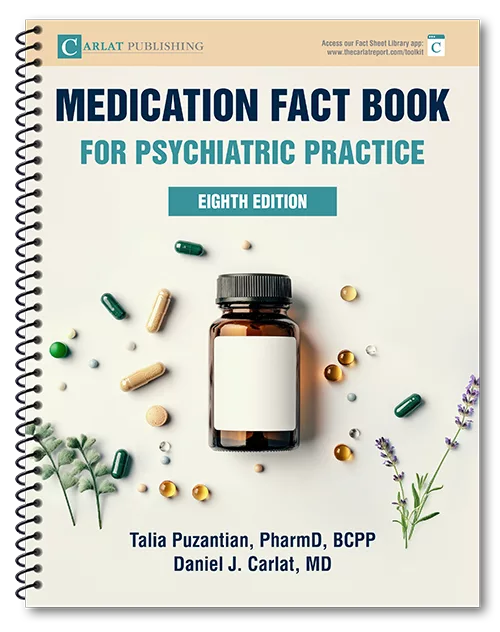Psychotherapy, Pharmacotherapy, and the Common Ingredients of Healing

Professor Emeritus of Psychiatry at George Washington University School of Medicine.
Dr. Frank has no relationships with companies related to this material.
TCPR: Your father, Jerome Frank, wrote a book about psychotherapy in 1961 that is still influential today (Frank J. Persuasion and Healing: A Comparative Study of Psychotherapy. Johns Hopkins University Press; 1961). How has it stayed relevant?
Dr. Frank: The book, which has been updated three times, examines psychological healing. It focuses on how a relationship with a culturally salient person, like a medical professional, may relieve distress from both physical and mental illness. Even now, when psychiatrists see themselves—or are considered by others—to be diagnosticians and prescribers, understanding the treatment relationship can help us be more effective.
TCPR: Are you talking about things like warmth and empathy?
Dr. Frank: My father and his colleagues extended and deepened our understanding of what makes a relationship therapeutic. They observed what therapists of different types were actually doing, cited anthropologists’ observation of Indigenous healing in traditional societies and religious healing in cults and shrines in the West, and conducted experiments on critical common elements of psychological influence. This work cast enduring light on how words, symbols, and prescribed rituals linked to an overarching scheme of meaning may engage patients’ or clients’ trust and enhance their response to whatever a therapist does. An unsettling finding is that the scheme—the theory behind the treatment—must be plausible to the patient and the therapist, but need not be objectively true. Plausibility trumps validity, even when working with DSM diagnoses and medications.
TCPR: How do these common ingredients play out in clinical trials?
Dr. Frank: The most compelling example is the National Institute of Mental Health’s Treatment of Depression Collaborative Research Program. The study compared four treatments: interpersonal psychotherapy, a therapy that was derived empirically from what a group of therapists were doing in an academic community; cognitive behavioral therapy; medication (imipramine); and placebo. To the consternation of the researchers, all approaches worked equally well (Elkin I et al, Arch Gen Psychiatry 1989;46(11):971–983). This conclusion supported the claim that common ingredients accounted for the shared effects of treatments, though it could be argued the two psychotherapies might simply have achieved common ends through the different techniques of each treatment. But when my co-author, Bruce Wampold, and his colleagues reanalyzed the results of the medication arm, they found something that points more toward a common ingredient (McKay KM et al, J Affect Disord 2006;92(2–3):287–290).
TCPR: What was that?
Dr. Frank: The nine psychiatrists who provided medication achieved markedly different results. Wampold’s reanalysis sorted the patients based not on whether they received imipramine or placebo but on which psychiatrist they saw. The psychiatrists who had the best results—in the top 30%—got better outcomes with placebo than the bottom 30% did with the active antidepressant.
TCPR: What were those top psychiatrists doing?
Dr. Frank: We don’t know for sure, but lots of studies tell us what those common ingredients might be. Effective treatments combat demoralization by building a strong therapeutic relationship. We convey to the patient that we have expertise and can help them, inspiring hope and providing security—a firmer ground to stand on.
“The psychiatrists who had the best results—in the top 30%—got better outcomes with placebo than the bottom 30% did with the antidepressant.”
Julia Frank, MD
TCPR: How can we inspire hope?
Dr. Frank: Simply accepting a person for treatment can communicate that someone important understands them, that they are not alone in their suffering and that things can get better. In many studies, people on a waiting list improve before they are seen. Someone who is quite symptomatic may improve between a first and second visit, merely from hearing a formulation of their case that provides hope.
TCPR: What else inspires hope?
Dr. Frank: Psychotherapies exert their effects by shaping people’s expectations, putting their thoughts and emotions into words, and restoring a sense of agency or mastery over previously overwhelming or troubling experiences. These insights require a reconceptualization of what psychotherapy treats: not mental illness per se, but the demoralization of distressed people unable to recover by their own efforts.
TCPR: Tell us more about providing a sense of security.
Dr. Frank: Therapy provides the security and grounding that allows patients to take risks. They can try new behaviors and pursue learning experiences that reshape their assumptions about the world. As change happens, they develop a greater sense of mastery and self-efficacy, countering the feelings of estrangement, helplessness, and demoralization that brought them to treatment in the first place.
TCPR: I understand it’s important that we believe in our work, but what if we believe too much?
Dr. Frank: Too much confidence in a theory can also hamper progress. The therapist has to be able to adapt what they think is going on to what the patient experiences and describes. Many patients who come to us express disappointment in prior treatments—and many leave to seek treatments that make more sense to them than the ones that we offer.
TCPR: Sounds like there’s a lot we need to do besides address symptoms.
Dr. Frank: Yes. People don’t come to treatment because of symptoms per se. They come because efforts to relieve those symptoms haven’t worked. People with alcohol use disorder wait an average of five years after they start to have problems from drinking before seeking treatment. For panic disorder, people wait an average of 12 years. For OCD, the average wait time is 10–17 years (Frank JD et al, Persuasion and Healing, Johns Hopkins University Press, 2025).
TCPR: Is the idea that most patients are somewhat demoralized by the time they get to see us?
Dr. Frank: Yes. Uncontrollable panic or extreme moods create feelings of inadequacy, discouragement, and estrangement from others. My father invoked the term “demoralization” to capture these qualities. Demoralization is the mirror image of the common effective elements of psychotherapy. The restoration of morale is as helpful for troubled people as the amelioration of symptoms, regardless of diagnosis.
TCPR: Chronic illnesses can be particularly demoralizing.
Dr. Frank: Yes, and even when we can’t fully relieve the symptoms of a chronic illness, we can still address how the illness isolates the patient and disrupts their ability to find meaning in life.
TCPR: What’s an example where these common ingredients made a difference?
Dr. Frank: My father was on call when he heard from a patient with schizophrenia who was visiting friends. She called because she was starting to hallucinate and giggle and feared that she was having a psychotic relapse despite being on a good dose of an antipsychotic. Though there was nothing he could do with medication, he reassured her that her symptoms would probably get better when she returned home. A few weeks later, she wrote, “After receiving your opinion, I returned to good functioning again. Just to be reassured by a competent psychiatrist that I and Stelazine are in control of the situation is the best therapy possible for me!”
| Common Factors in Therapy and Healing |
|---|
|
TCPR: Sounds like it wasn’t just Stelazine, but “I and Stelazine.”
Dr. Frank: Yes. Part of this work is restoring a sense of agency. When people are depressed or anxious, their basic assumptions about whether they can control events or trust other people are out of joint. We can change those assumptions by giving them a sense of control over things that previously felt uncontrollable. One thing all schools of psychotherapy have in common is they help patients see that their progress results from their own efforts.
TCPR: Is there a risk that prescribing a medication sends the message that matters are not in the patient’s control?
Dr. Frank: That can go either way. People may feel empowered knowing they have a tool that can control symptoms they previously found uncontrollable, or they can believe that medication is always necessary—as when people rely long-term on benzodiazepines for panic or hypnotics for sleep.
TCPR: How does this play out when we explain the mechanism of action of drugs?
Dr. Frank: I prescribe psychotropics, and I’m a sucker for a great “mechanism of action.” If I think I understand how a medication works, I communicate that explanation to the patient, and that cements a therapeutic bond. When I show continued interest in the patient’s response and try to make adjustments to reduce side effects or enhance benefits, I demonstrate to them that I understand and care about them. It is not uncommon for a patient to improve, only to confess that they are not taking a medication as prescribed, or at all. So I default to the common features of therapy to explain why they have gotten better.
TCPR: Is part of this about helping the patient create a story with more meaning and hope?
Dr. Frank: Yes. Psychotherapy involves creating a story that incorporates the patient’s distress into a more hopeful plot. Storytelling can make our communication, even communication about medication, more effective. Rather than merely telling my patients that something “works,” I may supply written materials that cover purported mechanisms of action or even provide an origin story of how a treatment was discovered.
TCPR: What’s an example of that?
Dr. Frank: I sometimes use omega-3s to augment antidepressants, particularly in pregnant or postpartum women because of the metabolic demands of pregnancy. I’ll start by asking, “Would you like to hear the story about why I think this will work?” I explain that the Inuits in Greenland, who eat tons of wild fish, don’t get as depressed as Scandinavians living at the same latitude, presumably because of the large doses of omega-3s in their diet. Having sufficient omega-3s makes neuronal membranes more flexible so they can respond to changes in the body’s internal chemistry. The American diet has too much omega-6 and not enough omega-3 fatty acids because we feed our livestock on corn, which is high in omega-6s. This makes membranes more inflexible. Then, I acknowledge that these epidemiological and biochemical facts aren’t convincing without evidence from the treatment of actual people and describe successful trials of Inuit-sized doses of omega-3s in severely ill bipolar patients. I have had a few patients who swear by this supplement, and it doesn’t really matter whether they are responding to the story or the membrane effects.
TCPR: What else influences the therapeutic relationship?
Dr. Frank: There are things we do automatically that affect the relationship—things like body language or making the office a welcoming space. Words matter. In a study of relaxation techniques, for example, patients had more subjective and objective improvement if the therapist introduced the treatment as “hypnosis” instead of “relaxation” (Lazarus A, Int J Clin Exp Hypn 1973;21(1):25–31). I have learned to talk to patients about “challenges” rather than “disabilities” or “handicaps” and to clarify that the patient and I are using the same words to describe the same things. The word “depression” is particularly slippery, since it can mean anything from a brief drop in mood to melancholia.
TCPR: How do you help people stay well?
Dr. Frank: What induces change is not the same as what maintains it. Sometimes changes in relationships that begin during therapy become self-reinforcing. People might achieve success at work or school, or cut ties with damaging associates—what I call a “network transplant.” I also use motivational techniques to get people to adopt new habits and routines. We have to guide people to do things when they don’t feel like doing them. With depression, that means overcoming anxiety, social discomfort, low energy, and all the things that drive avoidance. With the medically ill, the problems are often ones of discomfort or disability that can improve with physical or occupational therapy.
TCPR: What resources are helpful in this work?
Dr. Frank: Many conditions I treat are allied with support groups like the Depression and Related Affective Disorders Association (DRADA), the National Alliance on Mental Illness (NAMI), and Postpartum Support International (PSI). Alcoholics Anonymous (AA) and similar groups now typically see themselves as allies rather than opponents of professional treatment.
TCPR: Thank you for your time, Dr. Frank.

Newsletters
Please see our Terms and Conditions, Privacy Policy, Subscription Agreement, Use of Cookies, and Hardware/Software Requirements to view our website.
© 2026 Carlat Publishing, LLC and Affiliates, All Rights Reserved.


_-The-Breakthrough-Antipsychotic-That-Could-Change-Everything.webp?t=1729528747)



